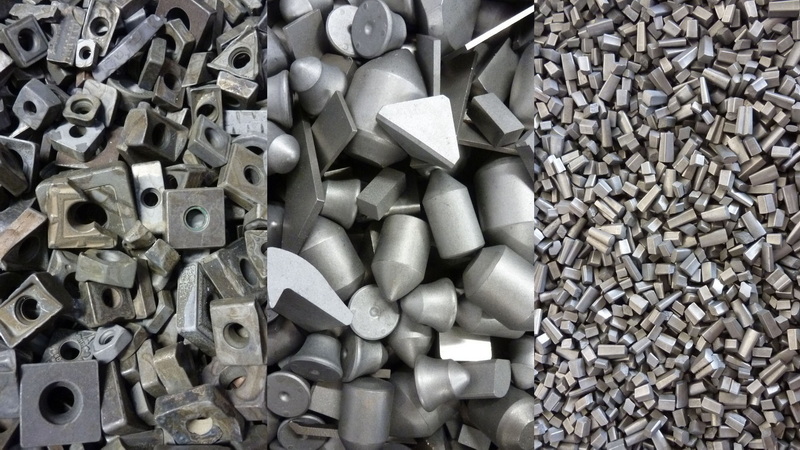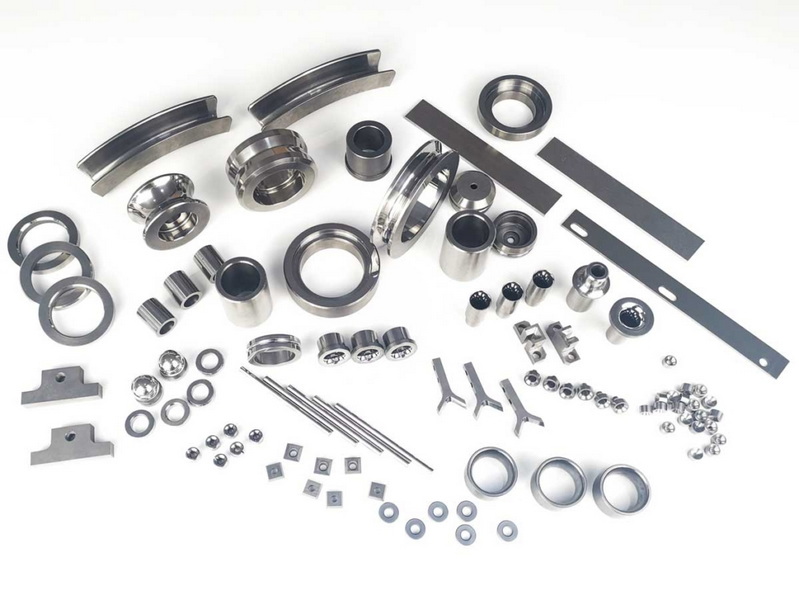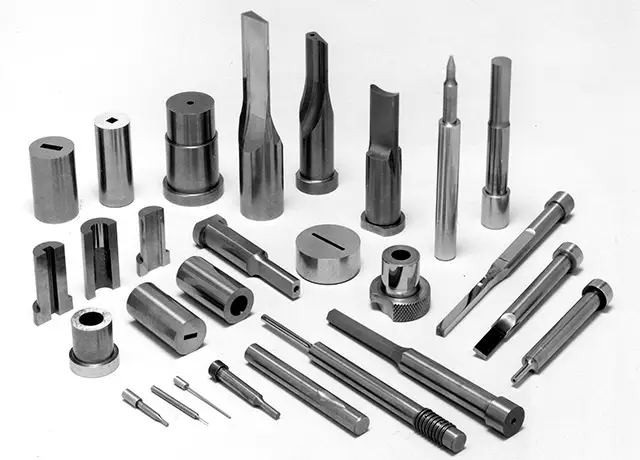Content Menu
● Introduction to Tungsten Carbide
>> Tungsten Carbide Applications
● Recycling Methods for Tungsten Carbide
>> 1. Zinc Melting Method
>> 2. Electrolytic Method
>> 3. Direct Recycling Method
>> 4. Acid Leaching Method
>> 5. Molten Salt Electrolysis
● Benefits of Recycling Tungsten Carbide
● Challenges in Recycling Tungsten Carbide
● Industry Developments and Innovations
● Conclusion
● FAQ
>> 1. What are the primary methods for recycling tungsten carbide?
>> 2. Why is recycling tungsten carbide important?
>> 3. What are the challenges in recycling tungsten carbide?
>> 4. What is the global recycling rate of tungsten carbide?
>> 5. How does the electrolytic method differ from other recycling methods?
● Citations:
Tungsten carbide, a compound of tungsten and carbon, is renowned for its exceptional hardness and wear resistance, making it a crucial material in various industrial applications, including cutting tools, wear parts, and abrasives. However, tungsten is a rare and finite resource, which underscores the importance of recycling tungsten carbide to ensure sustainability and reduce environmental impact. This article delves into the recyclability of tungsten carbide, exploring the methods, benefits, and challenges associated with its recycling.

Introduction to Tungsten Carbide
Tungsten carbide is primarily used in the form of cemented carbide, which consists of tungsten carbide particles bound together by a cobalt matrix. The cobalt content typically ranges from 5% to 14%, and it plays a significant role in determining the mechanical properties of the final product. The widespread use of tungsten carbide in industries such as automotive, aerospace, and manufacturing highlights the need for efficient recycling processes to conserve resources and mitigate environmental degradation.
Tungsten Carbide Applications
- Cutting Tools: Tungsten carbide is used in cutting tools due to its high hardness and resistance to wear.
- Wear Parts: It is used in wear parts like nozzles and seals due to its ability to withstand high pressures and temperatures.
- Abrasive Materials: Tungsten carbide is used in abrasive materials for grinding and polishing.
Recycling Methods for Tungsten Carbide
Several methods are employed to recycle tungsten carbide, each with its advantages and limitations.
1. Zinc Melting Method
The zinc melting method involves heating tungsten carbide scrap in a bath of molten zinc. The zinc reacts with the cobalt binder, forming a zinc-cobalt alloy that can be separated from the tungsten carbide particles. This method is effective for waste materials with low cobalt content or those containing other metals like tantalum and titanium.
Process Overview:
1. Tungsten carbide scrap is placed in a crucible with metallic zinc.
2. The mixture is heated to a high temperature, typically between 773 K to 873 K.
3. The cobalt reacts with zinc to form a zinc-cobalt alloy.
4. At 1173 K, zinc is removed by vacuum distillation, leaving behind loose WC and cobalt powder.
5. The recovered WC and cobalt powder are then processed (ball milled and sieved) for use in new production of tungsten carbides.
Advantages:
- Effective for low-cobalt content waste.
- Recovers materials that closely match the grade of the original waste.
Limitations:
- Requires complex equipment and high energy consumption.
- Generally, higher costs than the electrolytic method.
A[Tungsten Carbide Scrap] --> B[Molten Zinc Bath]
B --> C[Zinc-Cobalt Alloy Formation]
C --> D[Vacuum Distillation]
D --> E[Recovered Tungsten Carbide Powder]
2. Electrolytic Method
The electrolytic method is an efficient process that leverages the electrode potentials of different components within tungsten-containing waste. This method is particularly effective for waste materials that include tungsten carbide and cobalt metal.
Process Overview:
1. In an acidic solution, such as one with a hydrochloric acid concentration of about 20g/L, cobalt can be selectively dissolved.
2. A graphite anode and a nickel plate cathode are used, where the cobalt dissolves into the solution, forming CoCl2.
3. Electrolysis is performed at a low voltage of 1.0-1.5V, leading to the dissolution of cobalt and the peeling off of WC from the waste.
4. The anode mud produced is then processed (washed, ball milled, and sieved) to recover WC, which can be reused to produce new tungsten carbides.
Advantages:
- Low reagent and energy consumption.
- Simplicity of the process.
Limitations:
- Only applicable to waste tungsten carbide with a cobalt content above 10%[1].
A[Tungsten Carbide Scrap] --> B[Acidic Solution]
B --> C[Cobalt Dissolution]
C --> D[Electrolysis]
D --> E[Recovered Tungsten Carbide Powder]
3. Direct Recycling Method
Direct recycling involves mechanically crushing and grinding tungsten carbide waste into a fine powder. This method is energy-efficient and suitable for materials like grinding sludge.
Process Overview:
1. Tungsten carbide waste is sorted and cleaned.
2. The material is crushed and ground into a fine powder.
3. Heat treatments may be applied to remove impurities.
4. The powder is used to produce new tungsten carbide products.
Advantages:
- Energy-efficient and environmentally friendly.
- Low operational costs.
Limitations:
- May not be suitable for all types of tungsten carbide waste.
A[Tungsten Carbide Waste] --> B[Crushing and Grinding]
B --> C[Powder Formation]
C --> D[Heat Treatment (Optional)]
D --> E[Recovered Tungsten Carbide Powder]
4. Acid Leaching Method
Acid leaching involves dissolving the cobalt binder in an acidic solution, allowing the tungsten carbide particles to be recovered. This method is particularly useful for materials contaminated with oil or other substances.
Process Overview:
1. Tungsten carbide scrap is immersed in an acidic solution (e.g., nitric acid and hydrofluoric acid).
2. The acid dissolves the cobalt, releasing tungsten carbide particles.
3. The tungsten carbide is separated and washed to remove impurities.
4. The recovered tungsten carbide is processed into a powder.
Advantages:
- Produces high-quality material suitable for sensitive applications.
- Effective for cleaning contaminated materials.
Limitations:
- Requires careful handling of corrosive acids.
- Can be energy-intensive due to the need for purification steps.
A[Tungsten Carbide Scrap] --> B[Acidic Solution]
B --> C[Cobalt Dissolution]
C --> D[Tungsten Carbide Separation]
D --> E[Recovered Tungsten Carbide Powder]
5. Molten Salt Electrolysis
Molten salt electrolysis is a novel method used for recycling photovoltaic tungsten scrap. It involves using a molten salt electrolyte to recover tungsten and other valuable metals like lanthanum[3].
Process Overview:
1. Photovoltaic tungsten wire scrap is used as the anode.
2. A graphite crucible serves as the cathode.
3. The process involves the dissolution of lanthanum oxide in the electrolyte.
4. Tungsten powder is recovered and can be reused in photovoltaic applications.
Advantages:
- Environmentally friendly and sustainable.
- Allows for the co-recovery of multiple valuable metals.
Limitations:
- Limited to specific types of tungsten scrap.
A[Photovoltaic Tungsten Scrap] --> B[Molten Salt Electrolyte]
B --> C[Lanthanum Dissolution]
C --> D[Tungsten Recovery]
D --> E[Recovered Tungsten Powder]

Benefits of Recycling Tungsten Carbide
Recycling tungsten carbide offers several economic and environmental benefits:
- Conservation of Resources: Recycling reduces the need for primary tungsten extraction, conserving this finite resource.
- Energy Savings: Recycling processes generally consume less energy than primary production.
- Environmental Protection: By reducing mining activities and waste disposal, recycling helps minimize environmental degradation.
- Economic Benefits: Recycling can provide a stable supply of high-quality material at competitive prices, benefiting industries reliant on tungsten carbide.
Challenges in Recycling Tungsten Carbide
Despite the benefits, several challenges exist:
- Complexity of Scrap Materials: Tungsten carbide products often contain multiple components, making separation and processing complex.
- High Energy Requirements: Some recycling methods, like the zinc melting process, require significant energy inputs.
- Environmental Concerns: The use of chemicals in certain recycling processes can pose environmental risks if not managed properly.
Industry Developments and Innovations
Recent innovations in tungsten carbide recycling include the development of new technologies that enhance efficiency and reduce environmental impact. For instance, Lianyou Metals has introduced a patented cemented carbide recycling technology that replaces traditional energy-inefficient methods, significantly reducing CO2 emissions[4]. Sandvik has also implemented a unique cemented carbide recycling program that provides premium quality recycled powder, reducing energy consumption by 70% and CO2 emissions by 64%[5][10].
Conclusion
Tungsten carbide is indeed recyclable through various methods, each suited to different types of scrap materials. The zinc melting, electrolytic, direct recycling, acid leaching, and molten salt electrolysis methods offer viable options for recovering valuable tungsten and cobalt from waste materials. While challenges exist, the economic and environmental benefits of recycling tungsten carbide make it an essential practice for sustainable industrial operations.

FAQ
1. What are the primary methods for recycling tungsten carbide?
The primary methods include the zinc melting method, electrolytic method, direct recycling method, acid leaching method, and molten salt electrolysis. Each method has specific applications and advantages.
2. Why is recycling tungsten carbide important?
Recycling tungsten carbide is important because it conserves resources, reduces energy consumption, and mitigates environmental impacts associated with mining and waste disposal. It also provides economic benefits by offering a stable supply of high-quality materials.
3. What are the challenges in recycling tungsten carbide?
Challenges include the complexity of scrap materials, high energy requirements for some processes, and environmental concerns related to chemical use. Additionally, the need for specialized equipment and expertise can be a barrier.
4. What is the global recycling rate of tungsten carbide?
The global recycling rate of tungsten carbide is estimated to be around 46%. This rate varies depending on the industry and availability of scrap materials.
5. How does the electrolytic method differ from other recycling methods?
The electrolytic method uses an electric field to dissolve the cobalt binder, making it efficient for waste materials with high cobalt content. It is noted for its simplicity and low energy consumption compared to other methods like zinc smelting.
Citations:
[1] https://www.carbide-products.com/blog/tungsten-carbide-recycling/
[2] https://patents.google.com/patent/EP2521799A1/en
[3] https://pubs.rsc.org/en/content/articlehtml/2025/gc/d5gc00126a
[4] https://knowledge-hub.circle-economy.com/article/28700
[5] https://www.home.sandvik/en/stories/articles/2023/06/a-world-first-recycling-scheme/
[6] https://global-sei.com/technology/tr/bn75/pdf/75-08.pdf
[7] https://www.wedco.at/news_en/wolfram/?lang=en
[8] https://www.carbide-usa.com/everyday-uses-for-tungsten-carbide-through-carbide-recycling/
[9] https://www.linkedin.com/pulse/how-recycle-tungsten-carbide-yeyi-hardfacing-material
[10] https://www.rocktechnology.sandvik/en/news-and-media/news-archive/2023/03/sandvik-introduces-industrys-first-opt-out-carbide-recycling/
[11] https://www.saimm.co.za/Journal/v115n12p1207.pdf
[12] https://sumitomoelectric.com/sites/default/files/2020-12/download_documents/82-06.pdf
[13] https://rrcarbide.com/understanding-tungsten-carbide-composition-uses-and-expertise/
[14] https://www.retopz.com/capabilities/tungsten-carbide-recycling/
[15] https://tima-tungsten.de/tima/en/home/
[16] https://www.promarketreports.com/reports/tungsten-recycling-57554
[17] https://www.linkedin.com/pulse/carbide-recycling-more-sustainable-business-sandvik-coromant-6m58f
[18] https://www.allied-material.co.jp/en/research-development/tungsten_recycle.html
[19] https://www.mdpi.com/2075-4701/7/7/230
[20] https://www.mdpi.com/2071-1050/15/16/12249
[21] https://www.promarketreports.com/reports/cemented-carbide-recycling-61981
[22] https://www.openpr.com/news/3899720/cemented-carbide-recycling-market-key-trends-for-2025
[23] https://www.itia.info/wp-content/uploads/2023/07/ITIA_Newsletter_2019_08.pdf
[24] https://www.huaxincarbide.com/news/2025-industrial-cutting-tool-trends-the-market-outlook-for-tungsten-carbide-blades/
[25] https://blog.tbrc.info/2025/03/tungsten-market-share-2/
[26] https://pmarketresearch.com/product/worldwide-tungsten-carbide-wear-parts-market-research-2024-by-type-application-participants-and-countries-forecast-to-2030/worldwide-tungsten-carbide-insert-market-research-2024-by-type-application-participants-and-countries-forecast-to-2030
[27] https://www.fortunebusinessinsights.com/tungsten-carbide-market-111396
[28] https://www.questmetals.com/blog/the-value-of-recycling-tungsten-carbide-scrap
[29] https://www.hyperionmt.com/globalassets/nosearchfiles/product-pdfs/recycling/Hyperion_Carbide_Recycling
[30] https://aspioneer.com/here-are-the-benefits-of-recycled-tungsten-carbide-materials/
[31] https://www.itia.info/wp-content/uploads/2024/06/ITIA_ROTP1_29052024.pdf
[32] https://wiredspace.wits.ac.za/bitstreams/3ca64444-3e60-4109-a1a7-88b5061402f7/download
[33] https://www.carbide-usa.com/spotting-tungsten-carbide-household-products/
[34] https://www.tandfonline.com/doi/abs/10.1179/1743133615Y.0000000015
[35] http://www.scielo.org.za/scielo.php?script=sci_arttext&pid=S2225-62532015001200011
[36] https://www.tomra.com/waste-metal-recycling/media-center/news/2025/2025-trends
[37] https://www.langsuncarbide.com/blog/innovations-in-tungsten-carbide/
[38] https://www.wiseguyreports.com/reports/recycled-tungsten-market
[39] https://sumitomoelectric.com/id/project/v17/03
[40] https://core.ac.uk/download/pdf/188225302.pdf
















